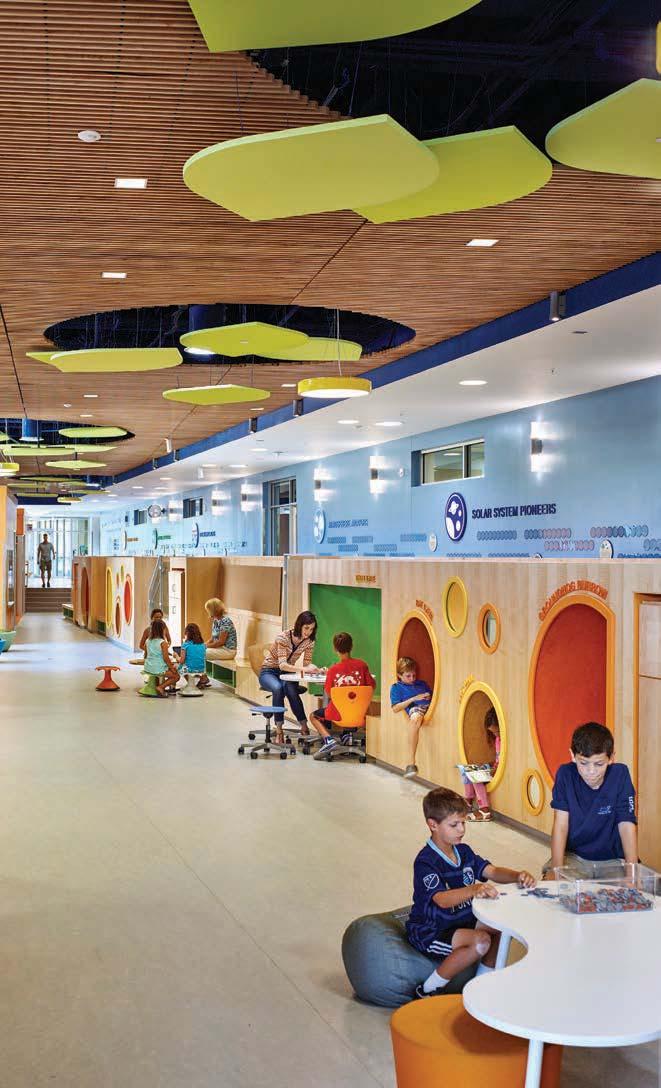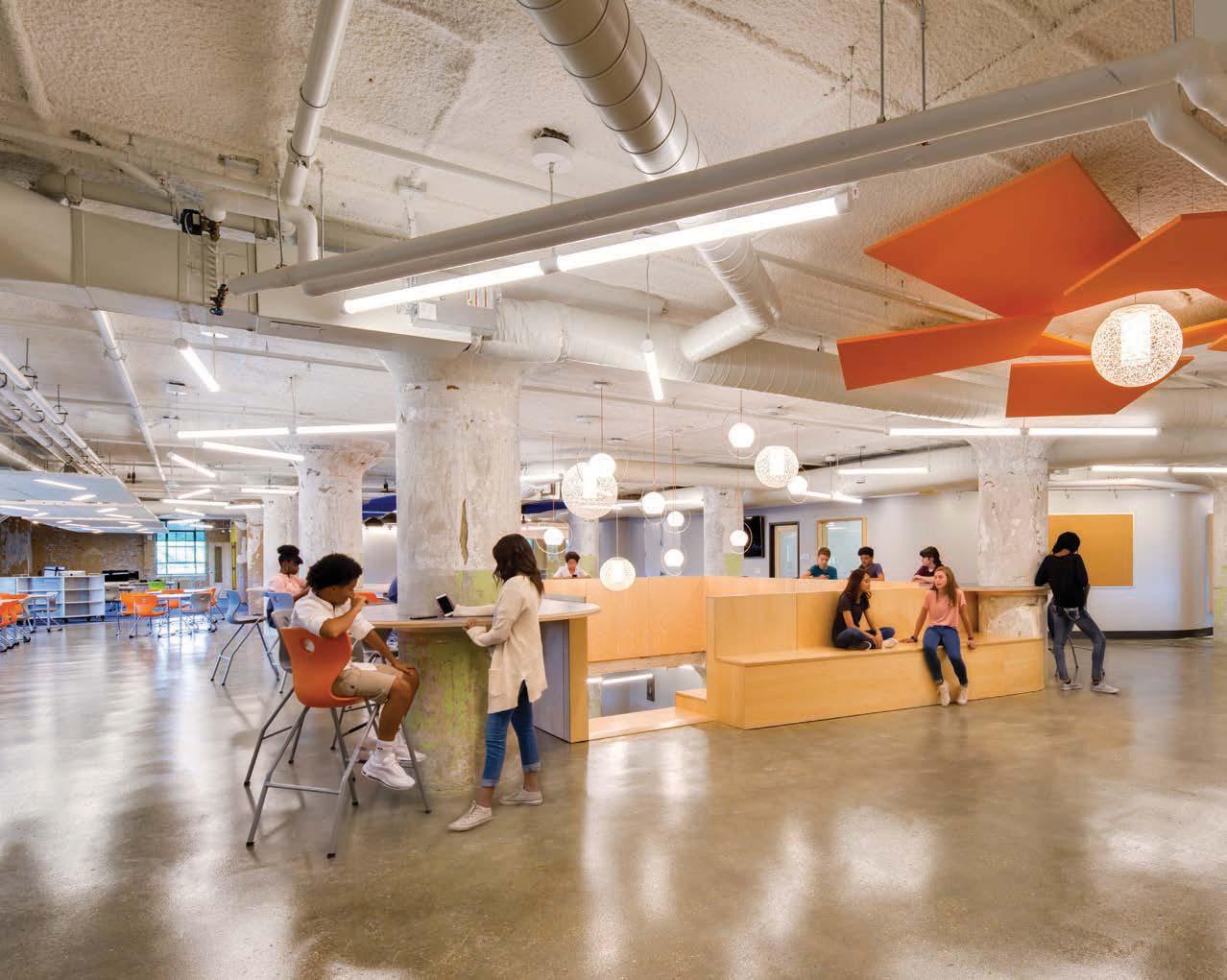
1 minute read
EMOTIONAL RELIEF
Since emotions are the main driver of human productivity, let’s find ways to keep them in balance.
Creating learning spaces where students and teachers truly want to be is the ultimate goal. A place where students happily learn and teachers teach with enthusiasm.
Environmental change creates behavioral change.
Quiet nooks and corners
In addition to areas that foster movement, the classroom should also have nooks and corners that children can seek out themselves when they need quiet time.
Students are constantly switching between being tense and relaxing throughout the school day. To thrive in these opposing states of being, students need appropriate spaces in equal measure. Spaces or zones that invite students to relax and recharge should not only have appropriate furnishings, but also the right lighting and colors in order to create a sense of well-being. It makes sense to locate quiet zones along lesser-used corridors so as to actively promote relaxation. A table facing the wall or located behind a mobile partition and quiet corners also provide the right working atmosphere for easily distracted children. In contrast, the area in the middle of the classroom offers more active space to move around.
Library
Due to school days becoming increasingly longer, students need openly accessible spaces that give them the opportunity to research independently, to read and to work. Here, too, the room’s design and furniture should offer different options for individual learning and working, including standing workstations, various seating options, good visuals and acoustics, and the appropriate media equipment.











